Though their diminished numbers hamper local wildfire response, real-life incarcerated firefighters are still on the front lines in Santa Cruz and Monterey counties.
By Charlotte West
Additional reporting by Julie Reynolds Martinez
This story is co-published with Open Campus, where an earlier version appeared.
In a trailer for CBS’s new firefighting drama, Fire Country, an opening scene of a wild, windswept coast in Northern California cuts to a parole hearing.
Bode Donovan, blond locks tucked neatly behind his ears, stands before a committee of three unsmiling bureaucrats. The hard-edged twang of Kane Brown’s “Riot” plays in the background.
“I want to say I take full responsibility for my actions,” says Donovan. “I stand before you a different man.”
In the next shot, Donovan, played by actor Max Thieriot, clambers off a bus at a California corrections fire camp. “Your life is pretty simple: work hard, do what I tell you, reduce your sentence, and you go home to your families sooner,” fire captain Manny Perez (played by Kevin Alejandro) tells the men.
The show (which Cal Fire officials do not endorse) appears to have the expected dose of interpersonal intrigue — in one controversial scene, for instance, Donovan brawls with a civilian firefighter.

In the real world, California’s incarcerated firefighters have long served as a below-the-radar front line that protects local communities.
In Santa Cruz, they can regularly be seen clearing flammable brush not far from million-dollar homes along Bay Street, just south of UCSC’s main entrance.
And California Department of Corrections and Rehabilitation firefighters were among the heroes who battled the 2020 CZU Lightning Complex Fire that ravaged Bonny Doon and Boulder Creek.
The Gabilan firefighters have done habitat restoration in Monterey, Del Rey Oaks and the Marina sand dunes.
The Monterey Bay area is home to two CDCR fire camps. In Santa Cruz County the Ben Lomond Conservation Camp houses 40 incarcerated people who were mostly trained at a state facility in Susanville.
The other, called the Gabilan Conservation Camp, is in South Monterey County, next to the two state prisons in Soledad. Another 54 incarcerated people work there as firefighters and support staff. Both camps are designed to hold double their current occupancy.
The crews don’t just fight fires and clear brush: the Gabilan firefighters, for example, have done habitat restoration in Monterey, Del Rey Oaks and the Marina sand dunes. They worked on flood control and clearing non-native vegetation from waterways in Carmel. And in local state parks, they’ve restored historic buildings and cleared hiking trails.
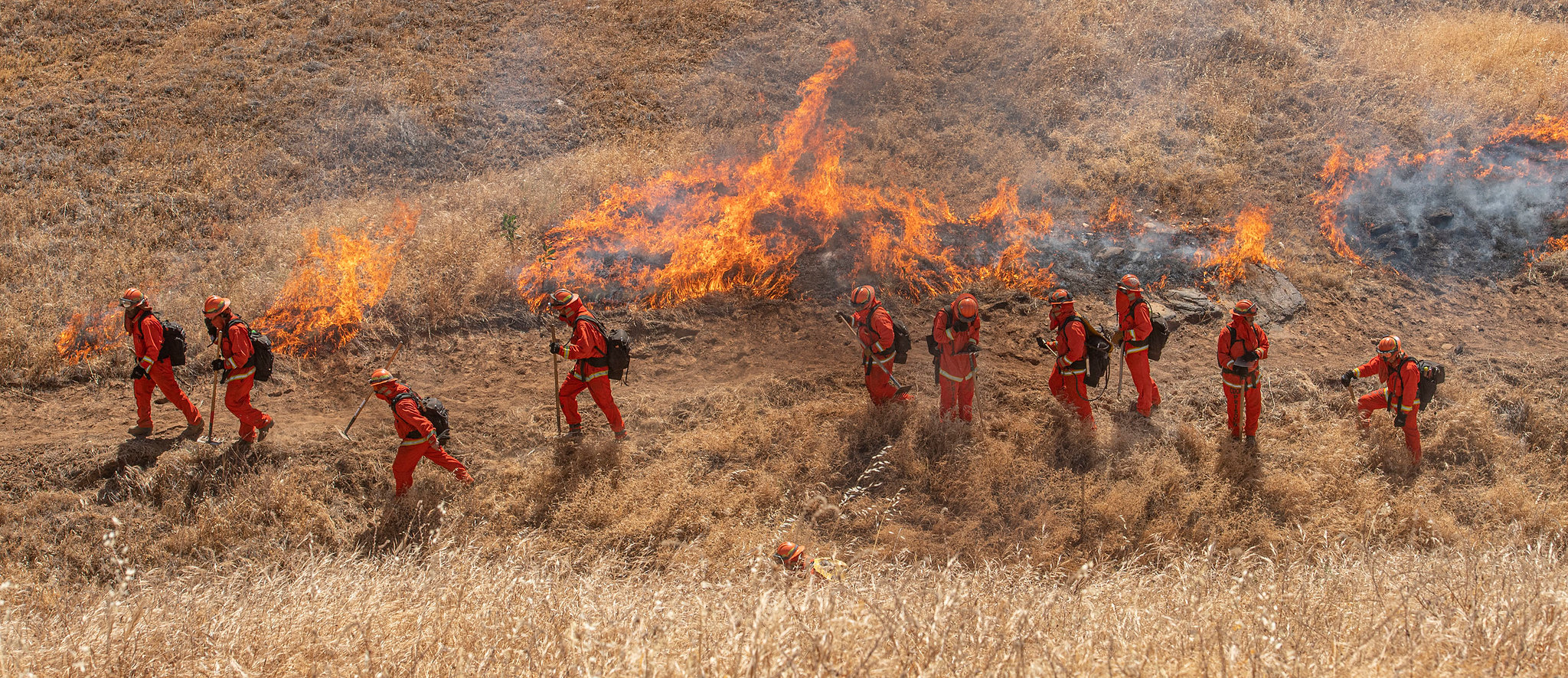
Opportunity or exploitation?
The timing of a new report on career opportunities for formerly incarcerated firefighters couldn’t have been better. The study was authored by student researchers affiliated with Underground Scholars, an academic support program for incarcerated and formerly incarcerated students, and published last week by the Institute for Research on Employment and Labor at the University of California at Berkeley.
The number of incarcerated fire camp workers has dwindled from 4,500 in 2012 to 1,600 last year. More and more have paroled without others to fill their spots, even as California’s wildfires raged. During the 2020 CZU Fire, Cal Fire CZU Unit Chief Ian Larkin told Santa Cruz County supervisors that his fire crews’ strength was “reduced significantly” and that his unit, which once had five CDCR fire crews assigned to it, now had only two during the peak fire season.
Centering the voices of former firefighters, the Berkeley report explores both the rehabilitative and exploitative aspects of California’s fire camp system.
The researchers found that California’s prison fire camps create meaningful experiences for incarcerated men and women and offer tangible benefits like sentence reduction. At the same time, incarcerated firefighters receive little recognition and low wages for doing the same job as civilian fire crews and face an uphill battle in pursuing careers in firefighting. Their pay ranges from $1 to $5 per day, and an extra $1 per hour while actively fighting fires, the study found.
Santa Cruz County has found the program to be a cost-saver, but it’s not because of the firefighters’ low pay.
The fire camps are controversial. Criminal justice reform advocates argue that the system is akin to slavery, forcing men and women to put their lives on the line for pennies.
But participating in the fire camps is voluntary.
One formerly incarcerated firefighter interviewed for the study noted that most of the criticism of the fire camps come from activists who have not been incarcerated themselves.
“I am not on board with the extreme antagonism we see in activist circles towards the fire camp program,” the interviewee said. “We…know that labor is an issue in prisons and that fire camps are not the principal type of labor we should be worried about…if we’re concerned with it from the labor/slavery perspective, let’s not focus on the single most humane place in the prison system.”
Santa Cruz County has found the program to be a cost-saver, but surprisingly, it’s not because of the firefighters’ low pay.
Like other counties, the local jail population surged following state prison “realignment,” which shifted many sentences to county jails instead of state prisons.
To ease the resulting crowding, in 2016, Santa Cruz started sending small pre-screened cohorts who committed low-level crimes to serve out their jail terms at the Ben Lomond Fire Camp. There, they were trained and joined the fire crews.
It became known as the “boarder program.”
“There is a significant savings to the county as the cost is about $10 a day at the camp vs. $125 a day to keep them at the jail,” noted a 2017 Grand Jury report. “The sheriff needs to be proactive with placing boarders, qualified inmates from the county jail system, at the fire camp when appropriate,” the grand jurors suggested.
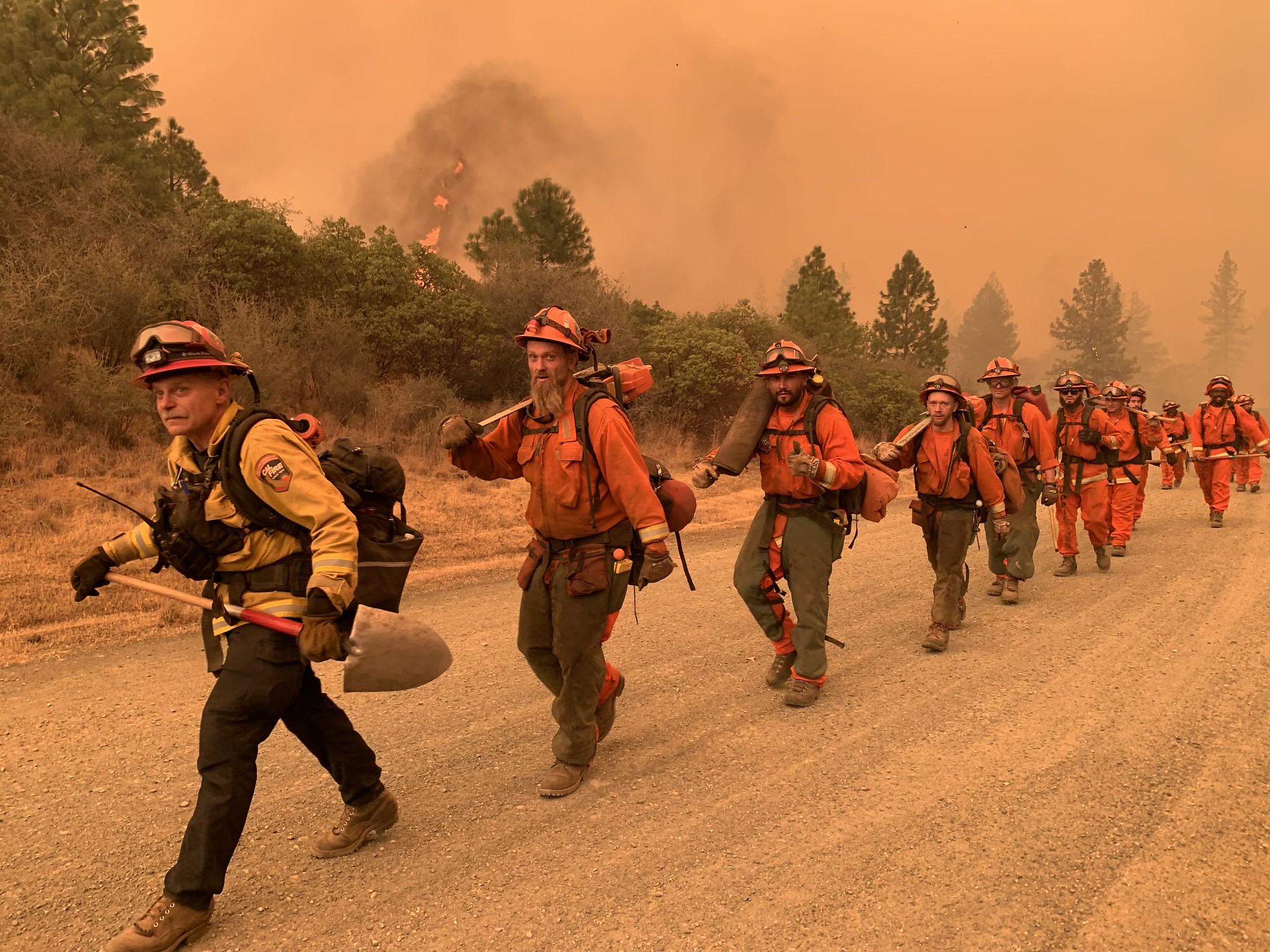
The story of a prison town
Thieriot, who grew up in Occidental in Sonoma County, pitched the series to CBS to highlight small towns where going to college isn’t the norm. “Most of my friends joined the military or went to work for Cal Fire out of high school,” he told TV Guide.
That’s the story of many rural communities in California, including in Susanville, a former logging town that’s been in the headlines since last year when the state announced the impending closure of one of the prisons located there.
There, Lassen Community College’s fire science program runs academies for Cal Fire. It also used to be the main training hub for incarcerated firefighters in Northern California.
As Open Campus reporter Nick Fouriezos wrote in his Mile Markers newsletter, hundreds of incarcerated firefighters have cycled through basic firefighting training run by the college. The trainees are then deployed in hand crews, who help remove vegetation and construct fire lines, based at 15 fire camps in Northern California.
But the number of incarcerated students bound for fire camps has dwindled due to the impending closure of the California Correctional Center in June 2023. When the prison closes, the Sierra Conservation Camp in Jamestown, Calif. will take over training for the entire state.
Under an agreement with Cal Fire, students who train in Susanville receive three college credits through Lassen Community College and a Cal Fire certificate that is recognized by other agencies. Cal Fire covers the cost of the training with no expense to the student, said Anna Pasqua, the college’s fire science coordinator.
But the opportunity for incarcerated firefighters to earn college credit for fire training will end with the closure of the prison.
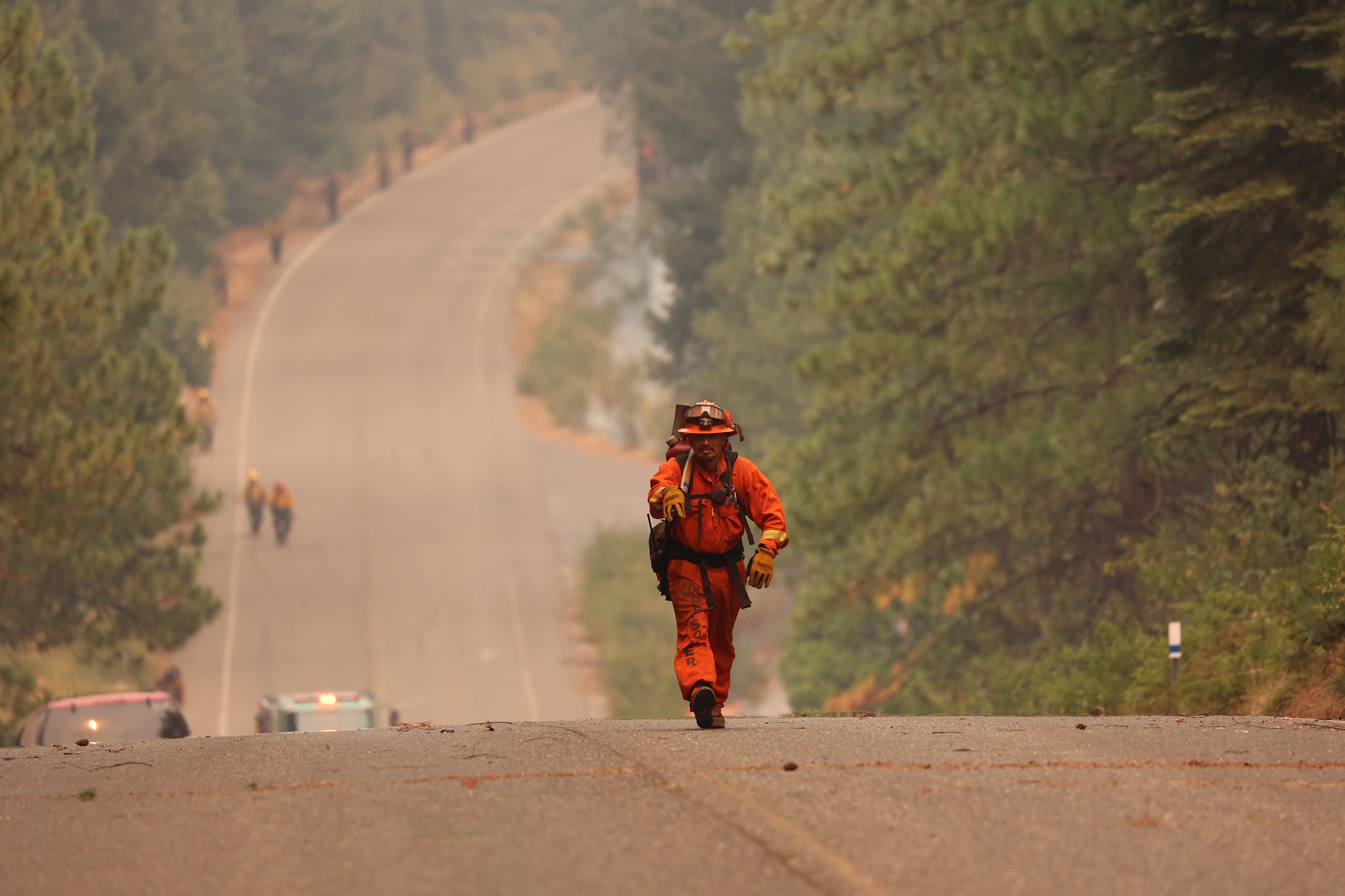
Direct contact with the outside world
While the college’s fire camp training program will be discontinued, it will maintain its relationship with the firehouse currently located at the California Correctional Center, which will soon move to High Desert State Prison.
Unlike the Soledad and Ben Lomond fire camps, this firehouse behind the walls operates like a normal fire department on the outside, with a group of around 15 men responding to calls both in the prisons and in the local community. In addition to the training they receive on the job, they also have the opportunity to earn an associate’s degree in fire science through the college.
Carlos Romo used to be one of them. Now 30, he was incarcerated at the age of 18 and spent the last decade trying to rehabilitate himself. He’d tried to go to college while incarcerated at other prisons, but faced challenges with registering for classes or getting the required textbooks.
He completed his associate’s degree last spring and then moved onto campus and enrolled in the Cal Fire Academy at Lassen College after being released in fall 2021.
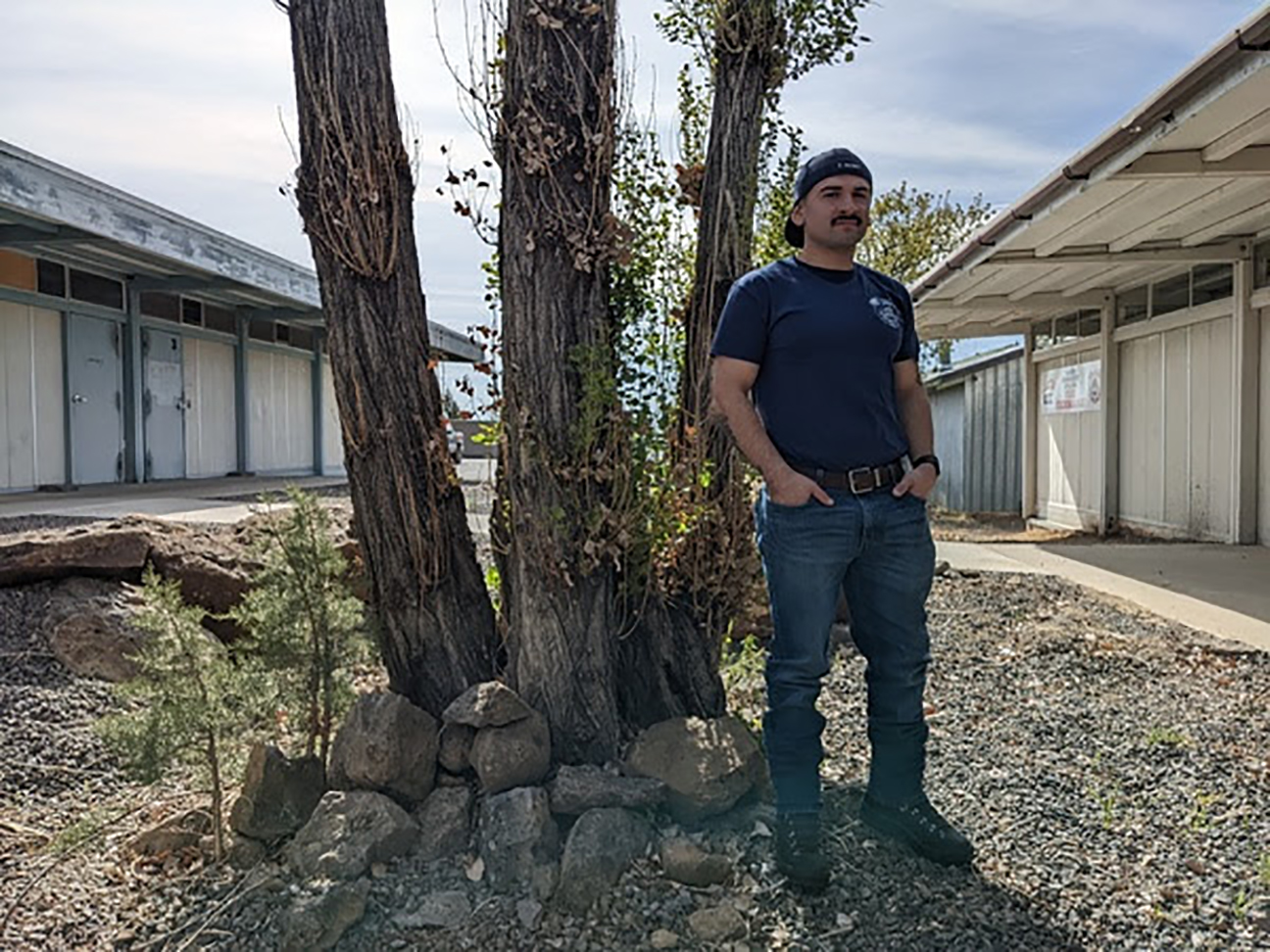
Romo said that working in the firehouse provided something rare in prison: direct contact with the outside world. Responding to incidents such as traffic collisions and medical calls meant he interacted with the general public, and that made his transition back into society easier.
Typically in California, people are released to the communities where they lived before they were incarcerated. But Romo, who is from Los Angeles, wanted to stay in Susanville because of the support he had from the staff and faculty in the fire science program.
Last fall, Romo completed a three-month academy that allowed him to be hired as an entry-level firefighter with Cal Fire. The position is seasonal, with a base monthly salary of around $3,450-4,350 (and weekly bonuses of $1,700-$2,200 when actively fighting fires).
Last spring, he was working three 24-hour shifts each week with Cal Fire and finishing up several general education classes at Lassen Community College. Now, he’s moved into his own apartment and is enrolled in an online bachelor’s program in fire protection administration and technology at California State University Los Angeles.
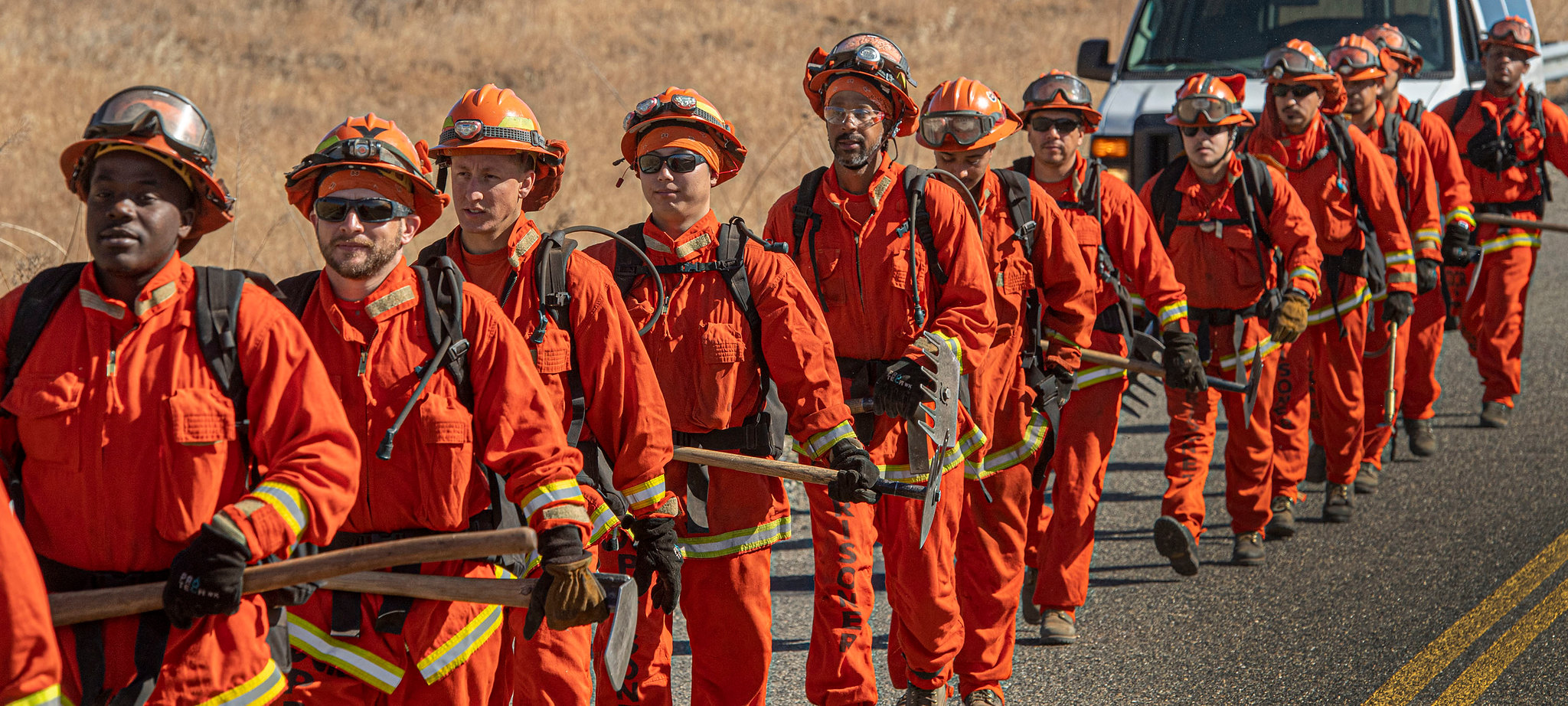
Licensing and expungement
Although recent legislation is supposed to make it easier for formerly incarcerated firefighters to expunge their records, Romo isn’t eligible because the law only applies to firefighters who were at fire camps, not prison firehouses. It also excluded fire camp workers who were not active on the fire line, such as clerks and kitchen workers – about 45 percent of the incarcerated residents of fire camps.
In addition, the law only applies to people convicted of crimes deemed non-violent, even though fire camps are open to so-called “violent offenders” as long as they meet other requirements and have “sustained good behavior” in prison. (Certain offenses such as sex crimes and arson automatically make some people ineligible.)
The Berkeley study noted that the legislation is so narrow and subject to judicial discretion that very few people have benefited from it.
A major barrier for many formerly incarcerated people seeking firefighting positions is the requirement to have an emergency medical technician license. California has a lifetime ban for people convicted of multiple felonies from being certified as EMTs, and individuals convicted of a single felony cannot become an EMT for 10 years after their sentence ends.
While Romo was able to find a firefighting job even though he had a conviction, there are still limits on his career. Cal Fire and federal agencies don’t always require EMT licenses, but most municipal fire departments do.
Many formerly incarcerated firefighters reported that none of the certificates they earned in prison or the work they had done counted as experience for outside firefighting, according to the Berkeley study.
One woman interviewed for the study said her background became a liability when she went back to school. “They knew about my experience from being inside a fire camp, because I did have hella certificates for shit that I wanted to show and post,” she said. “I wanted to tell people about what I know and what I learned. These folks made [it] very clear that they did not like me, they did not like where I got my skills from, and that it was a problem.”
One of the recommendations in the Berkeley report is to standardize training across fire camps, for instance by using Cal Fire’s fire academy curriculum, and for all camps to offer credentials that would be recognized by outside agencies.
The Ventura Training Center for formerly incarcerated firefighters does offer such a credential after they leave prison. Launched in 2018, the VTC is a unique partnership between the corrections department and the non-profit Anti-Recidivism Coalition, known as ARC.
After completing 18 months of post-prison training, graduates can seek employment with hand crews at Cal Fire, The Bureau of Indian Affairs, the US Forest Services and other government agencies.
One Ventura graduate, Michael Gebre, spent 60 days fighting the 2020 wildfires in Monterey, Fresno and Sonoma counties. The experience “showed me that I had some work ethic in me,” he said.
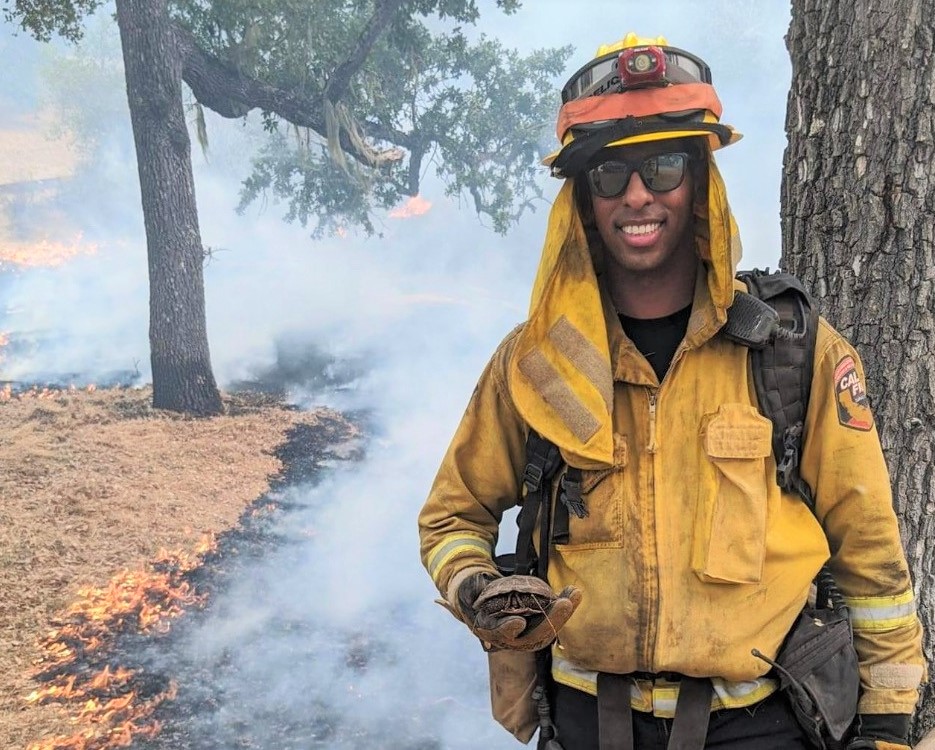
For his part, Romo sees his firehouse experience as an asset and isn’t shy about sharing his story. “Because of where I came from, and the experience that I got from being an incarcerated individual, I have more than what a lot of my coworkers have.”
He said he’s even mentoring some of the younger guys he works with at Cal Fire. “In a way it helps me be an example for them,” he said. “Doing my bachelor’s while working, a lot of the younger individuals are like, ‘hey, what I gotta do to go to school?’”
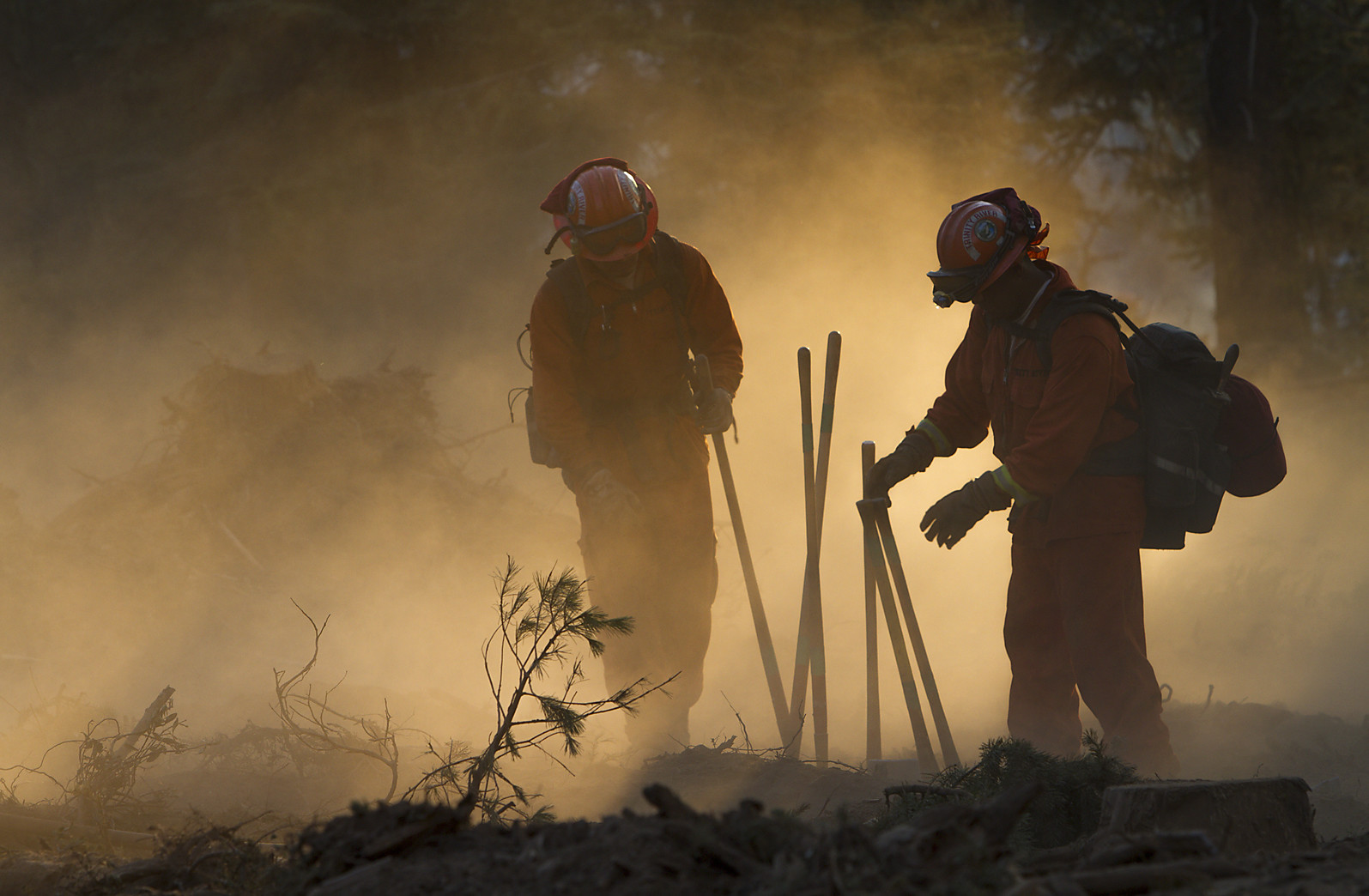
Have something to say about this story? Send us a letter.